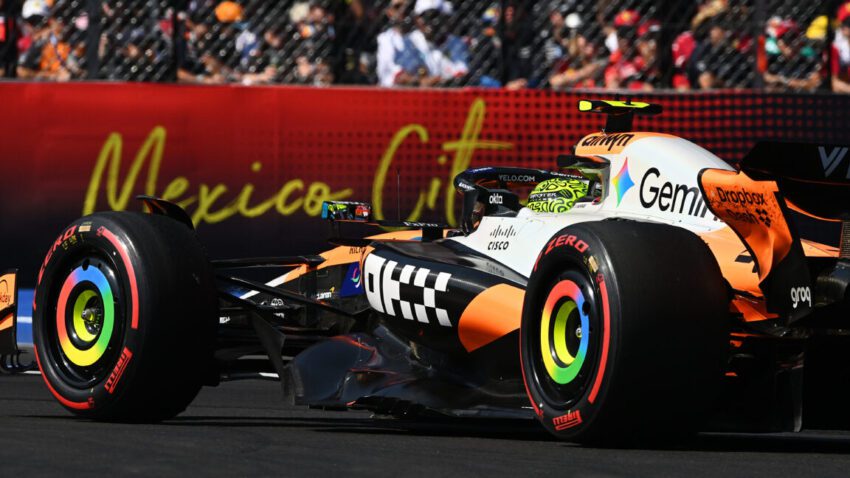
f1 in mexico city we have a Formula 1 has once again showcased its thrilling nature as a new championship leader emerges following the recent race in Mexico City.
f1 in mexico city we have a
The Unique Challenges of Racing in Mexico City
Mexico City is renowned for its vibrant culture and rich history, but it also presents unique challenges for Formula 1 teams and drivers. Situated at an altitude of over 7,350 feet (2,240 meters) above sea level, the city’s environment significantly affects the performance of the cars. The thin air at this elevation poses several complications that teams must navigate to achieve optimal performance during the race.
The Impact of Altitude on Performance
One of the most critical factors affected by the high altitude is the availability of oxygen. Internal combustion engines, such as the turbocharged 1.6-liter V6 engines used in Formula 1, rely heavily on oxygen for combustion. At higher altitudes, the air contains approximately 20 percent less oxygen compared to sea level. This reduction directly impacts the power output of the engines, leading to a noticeable decrease in performance.
In addition to power loss, the thin air also affects the cooling systems of the cars. Effective cooling is vital for maintaining optimal engine temperatures, especially during the intense conditions of a race. With less air available, the radiators and heat exchangers struggle to dissipate heat effectively, which can lead to overheating and potential engine failures.
The Role of Aerodynamics
Aerodynamics is another critical aspect influenced by the altitude of Mexico City. The downforce generated by the wings and underbody of the car is essential for maintaining grip on the track. Downforce is created by differences in air pressure above and below the car, and with less air density at higher altitudes, the amount of downforce generated is significantly reduced. This can lead to challenges in cornering and overall stability, requiring teams to adjust their setups accordingly.
Strategic Adjustments by Teams
Given these unique challenges, teams must make strategic adjustments to their cars and race strategies when competing in Mexico City. Engineers and drivers work closely to find the right balance between power, cooling, and aerodynamics to maximize performance on race day.
Engine Tuning and Setup Changes
One of the first adjustments teams make is to the engine tuning. To compensate for the reduced oxygen levels, teams often modify the engine maps to optimize power delivery. This involves fine-tuning the fuel mixture and ignition timing to ensure the engine operates efficiently under the thinner air conditions.
Additionally, teams may alter the aerodynamic setup of the car. This can include changing the angle of the wings to find a balance between downforce and drag. While a higher wing angle can increase downforce, it also increases drag, which can hinder straight-line speed. Teams must carefully consider these trade-offs to achieve the best overall performance on the track.
Tire Strategy and Pit Stops
Tire strategy is another crucial aspect that teams must consider when racing in Mexico City. The high altitude can lead to increased tire degradation due to the unique track conditions and the way the cars interact with the surface. Teams often analyze tire wear closely and may opt for different tire compounds to ensure optimal performance throughout the race.
Pit stop strategy also plays a vital role in the overall race outcome. Teams must time their pit stops effectively to minimize time lost on track while ensuring that their drivers have the best possible tire performance. The combination of tire strategy and pit stops can often be the deciding factor in a race, particularly in a challenging environment like Mexico City.
The Race Weekend: Key Highlights
The recent race weekend in Mexico City was filled with excitement and drama, culminating in the emergence of a new championship leader. The atmosphere was electric, with fans eager to witness the high-stakes competition unfold on the track.
Qualifying Sessions
Qualifying sessions are critical in Formula 1, as they determine the starting grid for the race. In Mexico City, the unique conditions meant that teams had to adapt their strategies quickly. The thin air affects not only the cars but also the drivers’ performance, as they must adjust their driving styles to cope with the altered grip levels.
As the qualifying sessions progressed, it became clear that several drivers were vying for pole position. The tension was palpable as teams pushed their cars to the limit, seeking to secure the best possible starting spot. Ultimately, the qualifying results set the stage for an exhilarating race day.
The Race Day Experience
Race day in Mexico City is a spectacle, drawing thousands of fans from around the world. The vibrant atmosphere, combined with the challenges of the track, creates a unique experience for both drivers and spectators. As the race commenced, the drivers faced not only the competition from their rivals but also the demanding conditions of the high-altitude circuit.
Throughout the race, teams had to remain vigilant, making real-time adjustments to their strategies based on tire performance, fuel levels, and the unfolding dynamics of the race. The high-stakes environment often leads to unexpected twists and turns, keeping fans on the edge of their seats.
The New Championship Leader
As the checkered flag waved, a new championship leader emerged, marking a significant turning point in the season. The driver’s performance throughout the race showcased not only skill but also the effectiveness of the team’s strategic decisions. This victory not only boosts the driver’s confidence but also places them in a favorable position as the championship race intensifies.
Reactions from the Teams and Drivers
The reactions from teams and drivers following the race were a mix of elation and disappointment. The newly crowned championship leader expressed gratitude towards their team for the hard work and dedication that led to the victory. “This win is a testament to the team’s effort and our ability to adapt to the unique challenges of Mexico City,” they stated in a post-race interview.
Conversely, other teams reflected on the lessons learned from the race. Many acknowledged the difficulties posed by the altitude and the need for continuous improvement as the season progresses. “We’ll take this experience and use it to refine our strategies moving forward,” said one team principal.
Looking Ahead: Implications for the Championship
The emergence of a new championship leader in Mexico City has significant implications for the remainder of the season. As the competition heats up, teams will need to adapt quickly to the evolving dynamics of the championship standings. The pressure will mount as drivers vie for points in the remaining races, each one critical in the pursuit of the championship title.
Moreover, the unique challenges presented by different circuits will require teams to remain agile in their strategies. The lessons learned in Mexico City will undoubtedly influence how teams approach upcoming races, as they seek to optimize performance in varying conditions.
Fan Engagement and the Future of F1
The excitement surrounding the recent race in Mexico City also highlights the growing engagement of fans in Formula 1. With the sport’s increasing popularity, particularly in regions like North America, the future looks bright for F1. The thrilling nature of races, combined with the strategic complexities, continues to captivate audiences worldwide.
As the season progresses, fans can expect more dramatic races, strategic battles, and the ever-present possibility of new championship leaders emerging. The combination of skill, strategy, and the unpredictable nature of racing ensures that each event remains a must-watch for motorsport enthusiasts.
In conclusion, the recent race in Mexico City not only showcased the unique challenges posed by high-altitude racing but also set the stage for an exciting championship battle. With a new leader at the forefront, the stakes have never been higher as teams and drivers prepare for the next chapter in this thrilling season of Formula 1.
Source: Original report
Was this helpful?
Last Modified: October 27, 2025 at 10:36 pm
3 views















